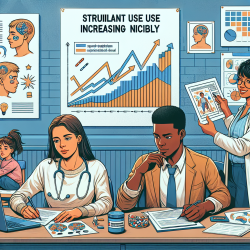As educators and practitioners in the field of special education, we continuously strive to refine our teaching methods and enhance our students' learning experiences. A pivotal aspect of our work involves fostering cognitive development and teaching thinking skills. The research article "Techniques for Teaching Thinking" from the "Practitioners' Guide to Teaching Thinking" series provides valuable insights and methodologies that can significantly impact our teaching practices.
The article underscores the importance of moving beyond traditional "show and tell" methods of instruction. Instead, it advocates for an approach that emphasizes stimulating questions and experiences that foster relevant cognitive abstractions. This shift in educational philosophy aligns with the growing recognition of the need for dynamic, interactive teaching strategies that engage students in deeper, more meaningful learning processes.
Here are several key techniques and outcomes from the research that can help practitioners improve their skills:
- Structured Classroom Environment: Creating a learning environment that facilitates the teaching of thinking skills is foundational. This involves organizing the classroom in a way that encourages inquiry, critical thinking, and problem-solving.
- Effective Questioning Techniques: Practitioners are encouraged to employ questioning techniques that challenge students to think deeply about the subjects they are learning. Questions should be open-ended, promoting exploration and discovery.
- Encouraging Metacognition: Teaching students to think about their own thinking processes is crucial. By fostering metacognitive skills, students become more aware of their learning strategies, strengths, and areas for improvement.
- Direct Instruction in Thinking Skills/Strategies: The research highlights the effectiveness of directly teaching specific thinking skills and strategies. This includes problem-solving methods, decision-making frameworks, and critical analysis techniques.
- Modeling Thinking Skills: Educators and practitioners should model the thinking skills they wish to instill in their students. Demonstrating how to approach problems, analyze information, and make reasoned decisions serves as a powerful teaching tool.
The application of these techniques requires a commitment to ongoing professional development and a willingness to experiment with new strategies. Encouraging further research and collaboration among educators can enhance the implementation of these methods. Additionally, integrating technology and digital resources can provide innovative ways to engage students in thinking activities.
Implementing the outcomes of this research in our teaching practices can lead to significant improvements in student cognitive development. It enables students to not only acquire knowledge but also to understand and apply information in complex, real-world situations. This approach prepares our students for future challenges, equipping them with the skills necessary for lifelong learning and success.
In conclusion, the "Techniques for Teaching Thinking" research article offers a comprehensive guide for educators seeking to enhance their teaching practices and foster cognitive development in their students. By embracing these strategies, we can create more engaging, effective, and thought-provoking learning experiences that prepare our students for the demands of the 21st century. To read the original research paper, please follow this link: Techniques for Teaching Thinking (From the "Practitioners' Guide to Teaching Thinking" series).










